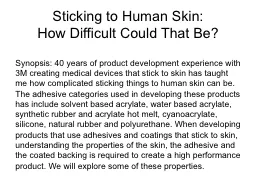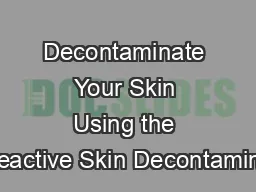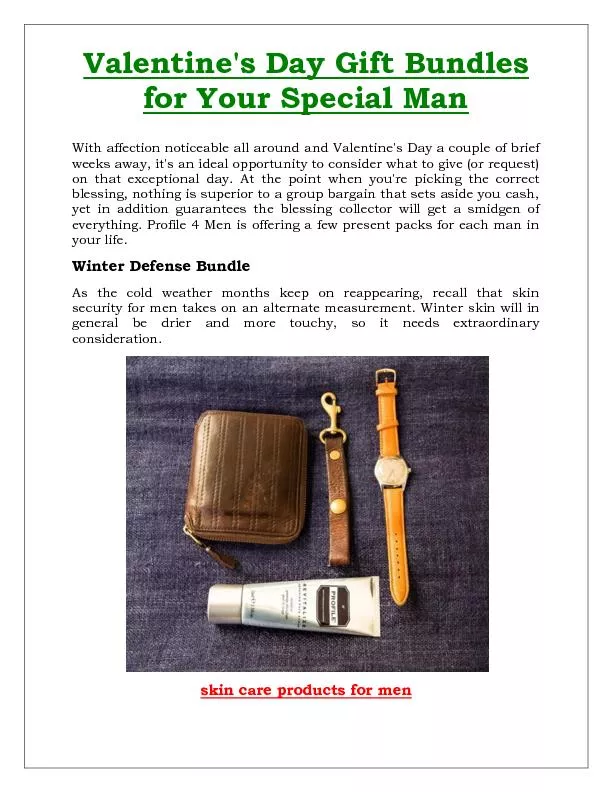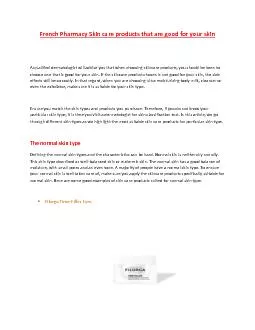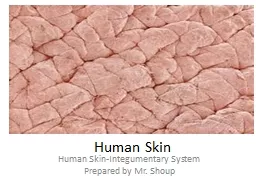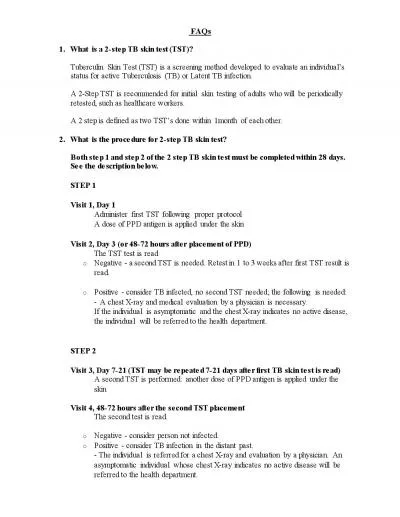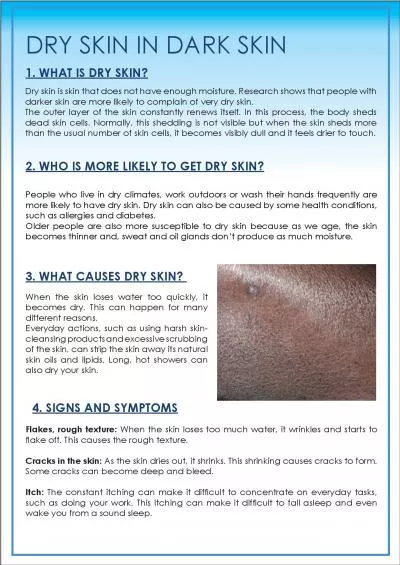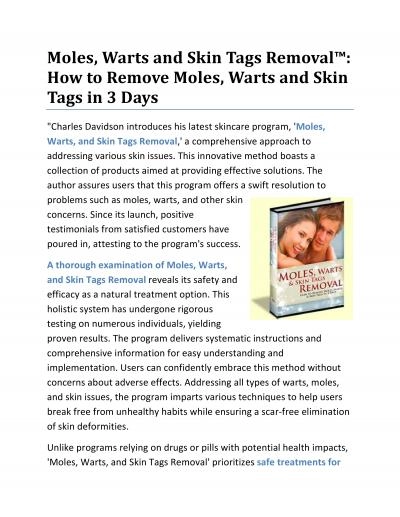PPT-Sticking to Human Skin:
Author : tatyana-admore | Published Date : 2015-12-11
How Difficult Could That Be Synopsis 40 years of product development experience with 3M creating medical devices that stick to skin has taught me how complicated
Presentation Embed Code
Download Presentation
Download Presentation The PPT/PDF document "Sticking to Human Skin:" is the property of its rightful owner. Permission is granted to download and print the materials on this website for personal, non-commercial use only, and to display it on your personal computer provided you do not modify the materials and that you retain all copyright notices contained in the materials. By downloading content from our website, you accept the terms of this agreement.
Sticking to Human Skin:: Transcript
Download Rules Of Document
"Sticking to Human Skin:"The content belongs to its owner. You may download and print it for personal use, without modification, and keep all copyright notices. By downloading, you agree to these terms.
Related Documents

